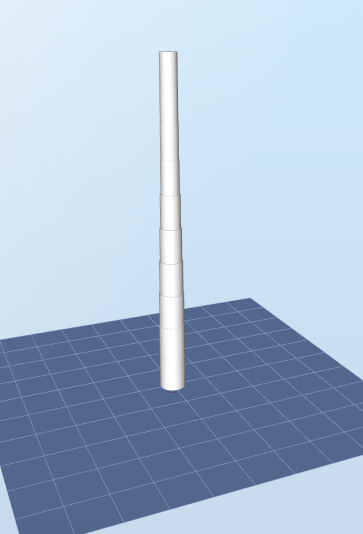IEA 15-MW tubular tower weight
1 Test description
This test compares the weight of the tubular tower for the IEA 15-MW model as specified in Gaertner et al. (2020) to the weight of the model implemented in Ashes. Therefore, the monopile and the full RNA are not included in this test (the RNA is instead modeled as a point mass. The figure below illustrates the model.

Note that the onshore template is used for this test. Therefore, buoyancy loads are not included in this test.
2 Analytical solution
The mass of the tubular reported in Table 1-1 of Gaertner et al. (2020) is 860 t. The mass of the RNA is 1017 t and is included as a point mass at the top of the tubular tower. With an acceleration due to gravity
$$g = 9.80665\text{m}\cdot{s}^{-2}$$
, the weight the tubular tower and RNA will be$$W = g\cdot(1017+860)=18.407\text{ MN}$$
For this test, we use the output Reaction force (magnitude) of the Support sensor. This output omits the bottom half of the lowest element of the monopile.
This element has a radius
$$r = 5\text{ m}$$
, a thickness$$t = 0.03950\text{ m}$$
and a length $$l = 13\text{ m}$$
. According to Table 4-1 in Gaertner et al. (2020), the density of the material used for the monopile is $$d = 8400\text{ kg}\cdot{m}^{-3}$$
(this includes mass for outfitting).The weight the lowest element is thus
$$W_{el}=\left(\pi r^2-\pi(r-t)^2\right)\cdot l\cdot d\cdot g=132\text{ kN}$$
The magnitude of the reaction force will thus be
$$F = W-W_{el}/2=17.75\text{ MN}$$
3 Results
The test is considered passed if the results from Ashes are within 0.01% of the results from the specification document.
The report for this test can be found on the following link: